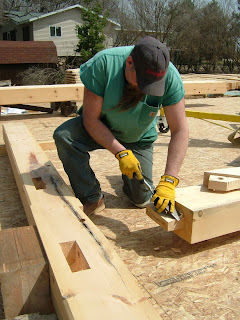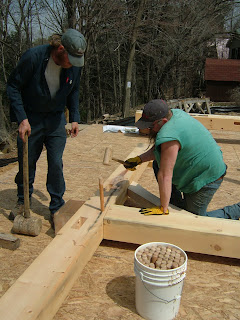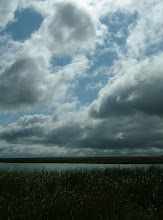When I asked the framer when the most dramatic day would be so that my son could skip just one day of school, he told me that they would not have 'timber in the air' until the third day. That means that parts of the structure will be lifted and moved into place with a crane from their bucket truck.
Of course we know that the structure is made of beams that sit on top of posts, but the 'queen beams' are the ones either side of the peak and the 'eave beams' are the ones at the outside perimeter.
Tabs called 'tenons' are fitted into slots called 'mortices'. This 'joinery' is cut by hand at the shop before it is delivered using power saws and power rasps and power sanders, all operated by hand. At the building site, adjustments to the fit are made by chisel and hammer.
The big hammer used to encourage the tenons into the mortices is a 'donkey'.
The pins used to hold the tenon in the mortice are 'pegs'. The holes are not lined up with each other, but the insertion of the peg pulls the parts closer together, making this 'draw' joinery.
The diagonal supports at the corners of the posts and beams are 'arch braces'.
When there is an extra bit of wood cut out of the post at the bottom of where the beam will fit in to provide extra support for the beam, that is called 'shouldering'.
Lifting posts or beams or assembled sections with the crane on the bucket truck is 'picking'.
A section that is assembled flat on the ground and then raised into position is called a 'bent'.
Once the bent is in place and all joinery is completed, a strap and ratchet are attached diagonally to pull it into square in a process called 'racking'.
Bents are attached to each other with 'connector beams'.
When it is all said and done, it is called 'beautiful'!
Okay, that last one was my own word.











No comments:
Post a Comment